Metal oxide varistor (MOV) finds use in many electrical and electronic equipment. I will explain in detail, that what is metal oxide varistor and how to use it. I also will explain, from where the voltage spike comes, etc with the help of various electrical circuit diagrams.
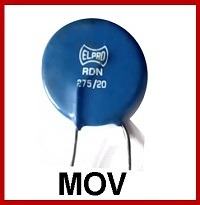
The content of this article is as follows
What is a metal oxide varistor?
The metal oxide varistor (MOV) is a protective device, which protects electrical equipment from transient high voltage spikes. It is a voltage-dependent non-linear electrical protective device, which suppresses the voltage transients.
MOV does not protect from continuous overvoltage.
It is a two terminals device.
Do varistors have polarity?
Varistors do not have polarity. So we can use them in the AC supply circuit. And it will protect from the both positive and negative voltage across the circuit.
What kind of voltage transient does it suppress?
High voltage transients in an electrical circuit can be of 2 types
- Transient high voltage – short time spike
- Continuous high voltage – Over voltage
Refer to figure 1a. It shows a transient high voltage short-time spike in AC supply. But this kind of high voltage can come in DC supply also in a big electrical system. The waveform shows the single cycle of the voltage. The RMS value is 230 volts ( just for example). It has a surge transient voltage of about a few kilovolts. This transient is only for a short time in a cycle.
The metal oxide varistor suppresses this kind of voltage transient. It is bidirectional so, it protects from both sides (plus and minus) of the voltage transients.
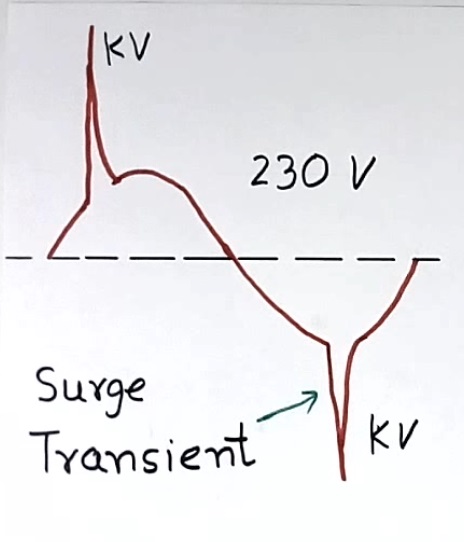
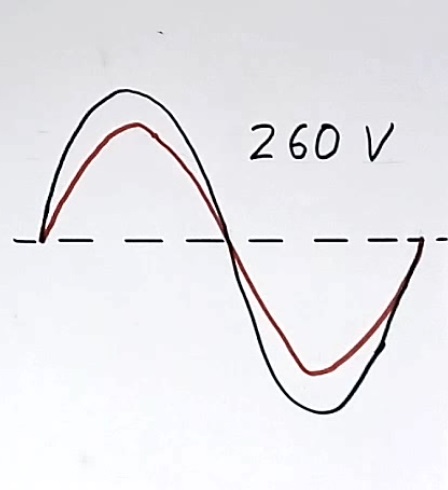
Now refer to Figure 1b. It shows continuous high voltage type overvoltage. The waveform with red color represents one cycle of the normal voltage of 230 volts RMS.
In this case, an overvoltage of about 260 volts comes for a full cycle (blue color waveform). This overvoltage may remain for many cycles.
Metal oxide varistor does not protect equipment from this kind of overvoltage ( as per figure 1b). If such voltage comes across MOV, and RMS voltage is very high, then MOV may fail. However, even before MOV fails, your electronics may fail. Further, refer to figure 1c.
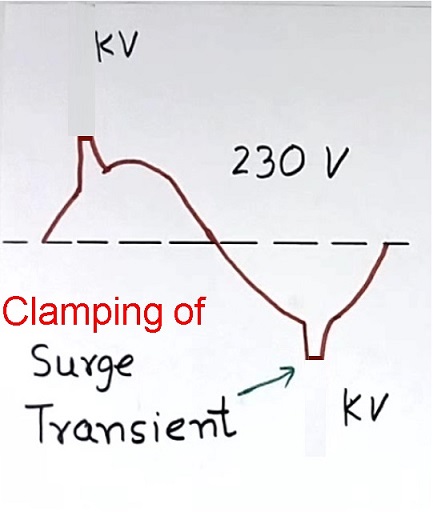
A metal oxide varistor does not suppress completely the transient voltage. Instead, it just reduces the transient voltage to a more safe limit.
Varistor voltage and VI characteristics of the MOV
Please refer to figure 2a for VI characteristics of the metal oxide varistor MOV. At low voltage, the electric current flow is very less. At a certain voltage current in the MOV increases very fast. This is called the clamping voltage of the MOV. It has a symmetrical characteristic for positive and negative voltage both. However, the point of the clamping voltage is not very sharp (fig 2b).
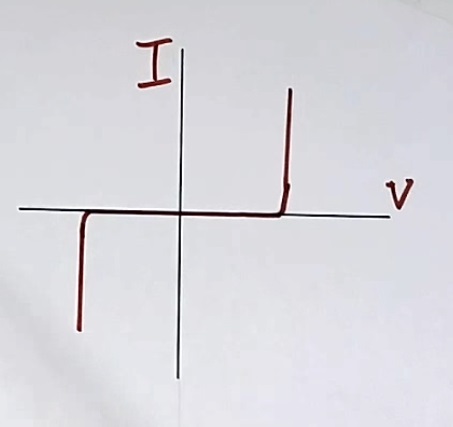
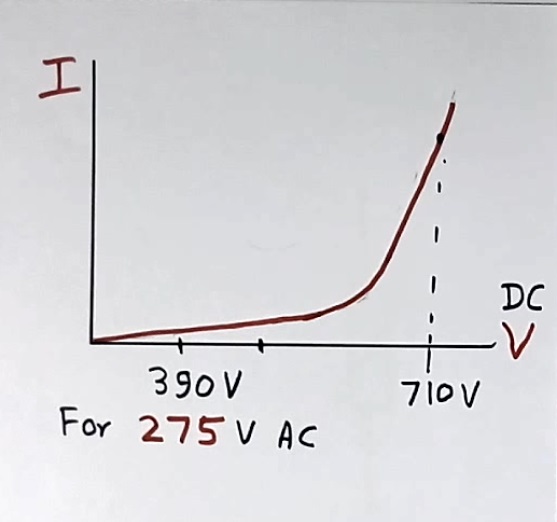
Refer to Figure 2b. This shows the expanded scale of correlation between voltage and current in the MOV type 275 volts AC (RMS).
At very small leakage current flows at low voltage. The current looks large at low voltage in the figure because the vertical scale is an expanded scale. The actual current is very less at low voltage.
The current started rising fast from about 700 volts ( 700 is instantaneous voltage, not the RMS). This 700 volt is the clamping voltage of the varistor.
The above plot is for a 275-volt RMS type MOV The clamping voltage is around 700 volts. This means if voltage transients are of few kV peaks, then MOV will limit the voltage only to around 700 volts. It will not clip voltage to the peak voltage of 230 volts (peak of about 330 volts).
This means, that our equipment must be able to take 700 volts of transients ( even if MOV is connected) in the above example.
And all the good electrical equipment can work properly up to that transient.
Further, there will be other voltage transient filters like an inductor, capacitor, Transorbs, etc inside the equipment to protect the electronics.
Advantages of metal oxide varistor
The advantages of the MOV varistor are as follows:
- Virtually no current flows in the varistor during the normal voltage condition
- It has high current and energy handling capacity during the transient.
- It is very fast
- Available in many voltage and energy ratings
- Low cost
How to connect metal oxide varistor in a single-phase circuit
Figure 3 shows the connection diagram of a metal oxide varistor for home use for a single phase. It is simply connected between line and neutral. It should be as close to load as possible.
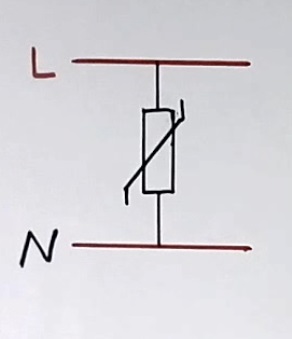
Figure 4 shows the varistor connection inside an extension box for home use. The varistor is directly connected to the 2 pins of the electrical socket between the line wire and the neutral wire.
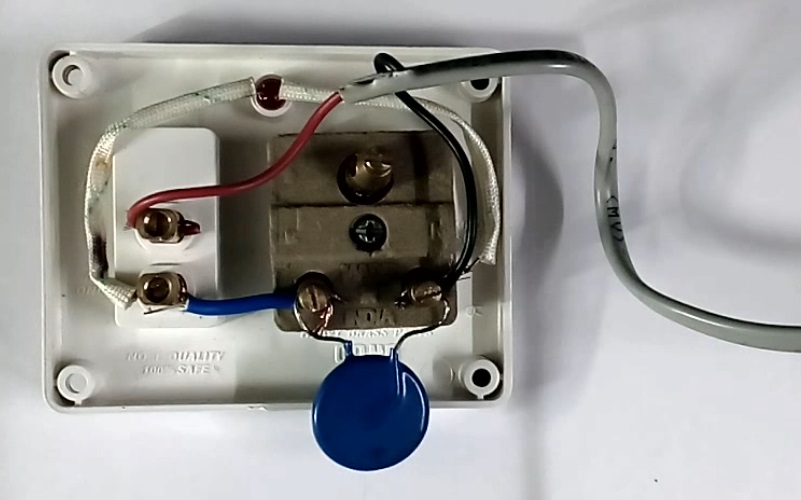
Figure 5 shows the varistor connection for a single phase for industry use. Three devices are connected. The 1st one is in between the line and neutral, 2nd device is in between the line and earth, and the 3rd varistor is connected between neutral and earth.
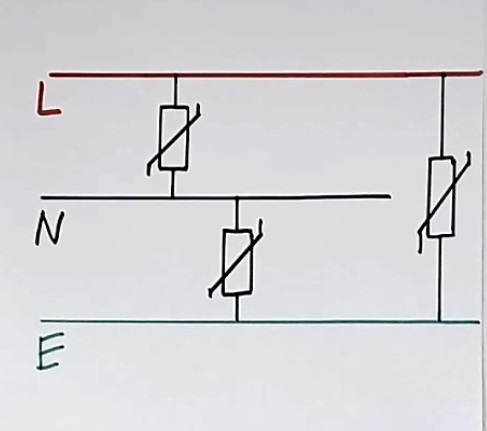
You can use fig 5 type connection for the home also, provided the earth connection and wiring are very good. If earthing is not good, then there may be an electric shock in touching the earth pin of the equipment also.
How to connect and use a varistor for a 3-phase circuit
Figure 6 shows a metal oxide varistor for a 3-phase 4-wire supply. There are 3 varistors. One each between each line wire and earth.
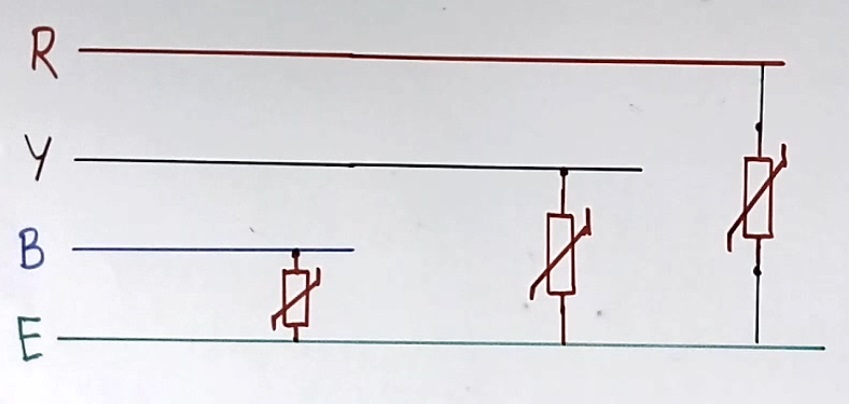
If we have only 3 wire 3-phase system, the metal oxide varistor is to be connected between all three lines red-yellow, yellow-blue, and blue-red. But the voltage of the varistor will have to be selected as per line-to-line voltage.
What is 275/20 metal oxide varistor means
Now refer to figure 7. The data on the device shows 275/20. The 275 is the RMS volatge. And 20 is the diameter of the varistor in mm. The the scale in image measures the diameter of the device as 20mm.
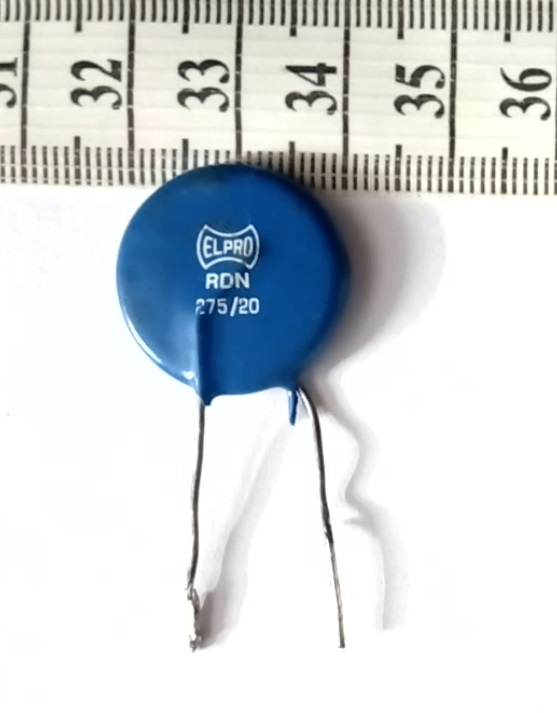
However, different companies may follow different methods to write the specification on the varistor.
Which varistor should we use at home?
I have a 230-volt RMS AC supply to my home. I am using 275 volts 20mm type as in the above figures.
You can use small sizes like 14 or 10mm metal oxide varistor also, but the 20mm MOV type will absorb more energy. Further, there is hardly any price difference between 20mm and 10mm sizes.
So always select a varistor of higher energy like 20mm type for home use.
How to connect and use a varistor in a circuit
We can connect only one metal oxide varistor for many switches and sockets assembly. This is explained in the connection diagram. All switches in this circuit are after the varistor. ( see figure 8 for connection)
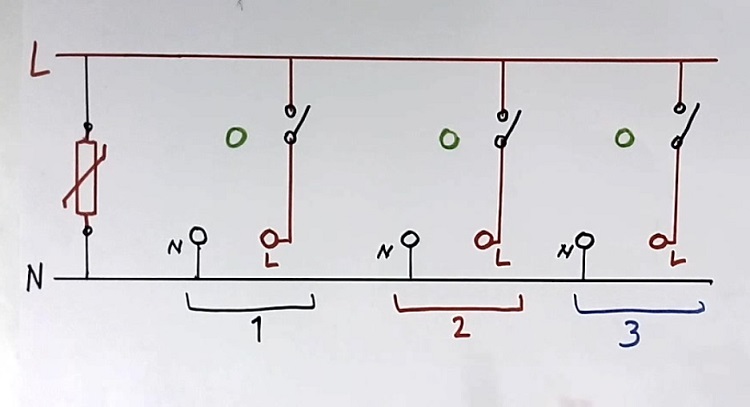
If there is only one switch for many sockets, then the varistor should be connected between the line and neutral for any one socket. Figure 9 shows the connection diagram.
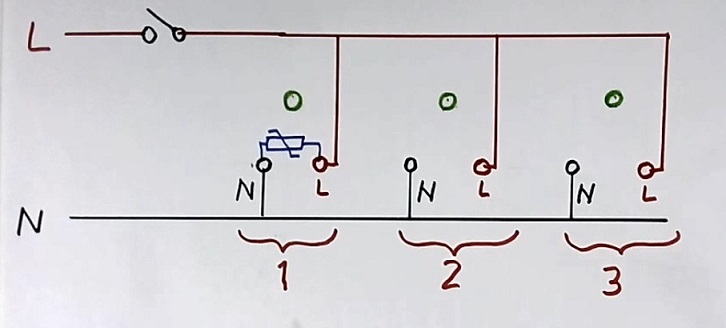
The varistor can be connected to any one of the sockets.
How transient high voltage can come to the PC at the home
Now we will look at figure 10. It is an example of that “How a transient high voltage spike surge comes to the PC at the home”.
The “M” in the diagram indicates some equipment with motors, like a washing machine or a water pump. The same AC supply goes to the computer also.
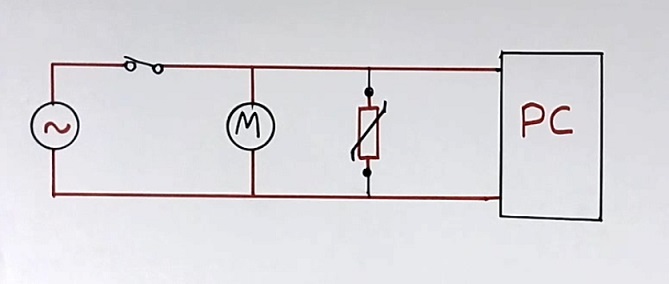
The switching transient will generate during the On OFF of the motor. We also call it the switching impulse. The switching impulse voltage generated due to the motor will go to the PC also.
This switching impulse may be of a few kV also.
All the equipment connected to this wire will have a problem. A metal oxide varistor should be connected across the input (extension board) of the laptop to protect it.
Transient high voltage due to lightning ( lightning impulse)
Now refer to figure 11. It shows the phenomenon of lightning around clouds. Whenever lightning happens in the cloud, then there will be a heavy current flow around the cloud. And we know that a current-carrying conductor has a magnetic flux around it.
So, here also this current will have flux around this current. This flux will also pass through the electrical wire in our home.
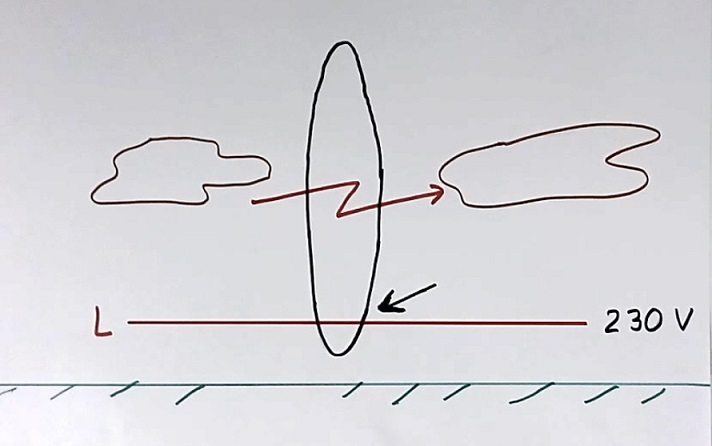
Then because of this flux, a voltage will induce in the electrical wire. This induced voltage due to this flux is nothing but transient high voltage. We call this voltage a lighting impulse also.
Depending on the intensity and location, this switching impulse may have different voltage magnitudes.
This transient voltage of high magnitude may damage the equipment. The metal oxide varistor can protect the equipment from these voltage spikes.
A switching impulse of lower magnitude behaves like electrical noise.
Types of voltage surge spikes in an electrical circuit
These voltage transients are of two types
- Random type
- Repetitive type
The random type spike comes once sometimes. The repetitive type transients may go on coming many times.
Further, the diagram in figure 12 shows the voltage waveform of one pulse of the voltage transients. The transient high voltage increases fast with time in the beginning. Then it will be at peak voltage for some time. Then Its voltage value starts reducing slowly.
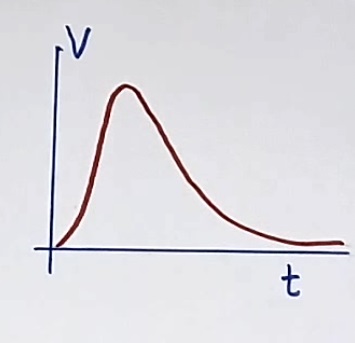
Experience-based knowledge of metal oxide varistor
As I had the opportunity to design many industrial panels for the company I worked for. And I used varistor in many cases. However, we require additional protection for the electronic circuits.
So I used an inductor, capacitor, Zener diode, RC filter, shielding, proper cable routing, and Transorb as additional protection for the circuits. The method of filtering and protection depends on the applications.
In fact, we test our panels for this kind of surge protection. We feed the voltage spike of many types as per standard, to all inputs of circuits using a surge spike generator. Then we see that all equipment should be working properly.
A few times we observed that, as we apply the high voltage spikes to the circuit, then many relays will start operating. And also many LEDs will start blinking. This means, that design is not proper and needs improvement.
Then the most difficult activity of problem and solution finding will be there.
Example of an interesting problem
I would share with you one of the most time-consuming and interesting problems of false relay switching due to switching voltage transients. I tried my best for a long time to solve it, but no success. Even if all the transient suppressing devices and filters were in place.
After a few months, my luck helped us. Incidentally, I touched a particularly common wire connection (out of 100s of wires) in the DC supply wire. That particular wire connection was loose.
This loose connection was behaving line frequently opening and closing a switch. This generates an unwanted switching impulse noise of low voltage level.
Moreover, this switching transient noise generation was happening in the middle of the circuit’s system. So it was bypassing the filter provided at the inputs.
The electrical and electronic circuits will pick up these signals. Then, the circuit will amplify the signal. This behaves like a false input signal and performs unwanted switching of the output relay and LED.
After fixing this problem, everything was alright.
I hope that you enjoyed the article on what is metal oxide varistor and how to use it.
For further learning, watch the video at the following link.
Further, read what is a relay
Also, read why 30 ma RCCB breaker is used
Further, read the applications of diodes.
For more knowledge on electrical transformers read the SMPS transformer concept
I hope that you enjoyed the article What is metal oxide varistor (MOV)?
About the author – G K Agrawal B.Sc and B.Tech (from HBTU Kanpur), Retd. Sr DGM Design (BHEL), the inventor of patents, has lifelong industry experience in the electrical and electronics design field of R&D. He worked for BHEL. He shares his experience and knowledge on blogs and YouTube. Read the profile here.

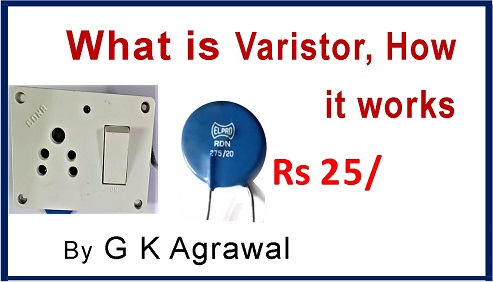

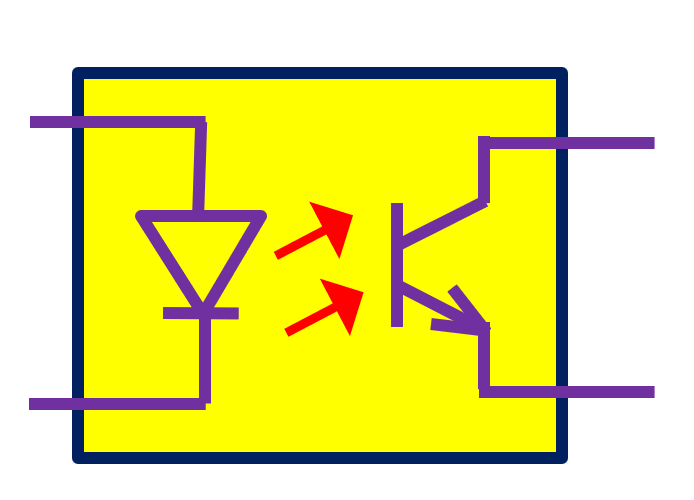
Great article
My name is sherika from ForeMedia and I help website owners with great websites to maximize the revenue they make from their website.
I would love to buy Ad Spaces on your website and pay you per each impression of the ads on your site. We are Google Ad Exchange Premium partners and we work with more than 100 Ad Network & thousands of premium direct advertisers who would LOVE to buy Ads directly from your site and we can gurantee to increase your revenue by at least 45% compared to other advertising solutions you are currently using.
You deserve to earn more for your content and maximize your earning potential and I will help you unlock that potential!
There is no cost, you can register to our monetization platform for free on this link: bit.ly/3Vj7rly
I will be available for you on the Chat if you need any help if you have any questions.
I have at least 17 Premium Advertisers that have asked me to approach you because they would like to advertise on your website on Premium eCPM [cost per impressions] basis.
Have a good day & feel free to ping me for any question!
Click the link here for 1 minute registration to our platform [it’s free!]: bit.ly/3Vj7rly
Yesterday, while I was at work, my sister stole my iphone and tested to see if it can survive a forty foot drop, just so she can be a youtube sensation. My apple ipad is now broken and she has 83 views. I know this is entirely off topic but I had to share it with someone!
Hello, I log on to your new stuff daily. Your writing style is awesome, keep doing what you’re doing!
Your comment is welcome.
If some one needs expert view concerning running a blog then i advise him/her to pay a quick visit this webpage, Keep up the fastidious job.
Thanks on your marvelous posting! I quite enjoyed reading it, you will be a great author.I will always bookmark your blog and definitely will come back later on. I want to encourage one to continue your great writing, have a nice day!
I was suggested this web site by my cousin. I’m not sure whether this post is written by him as no one else know such detailed about my problem. You are amazing! Thanks!
This post is truly a nice one it assists new internet users, who are wishing in favor of blogging.
Pingback: Ungrounded electrical system - advantages and disadvantages - G K Agrawal